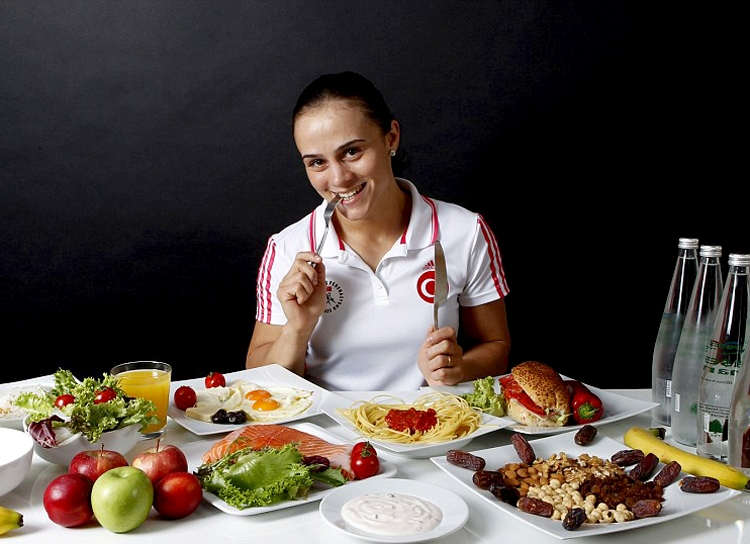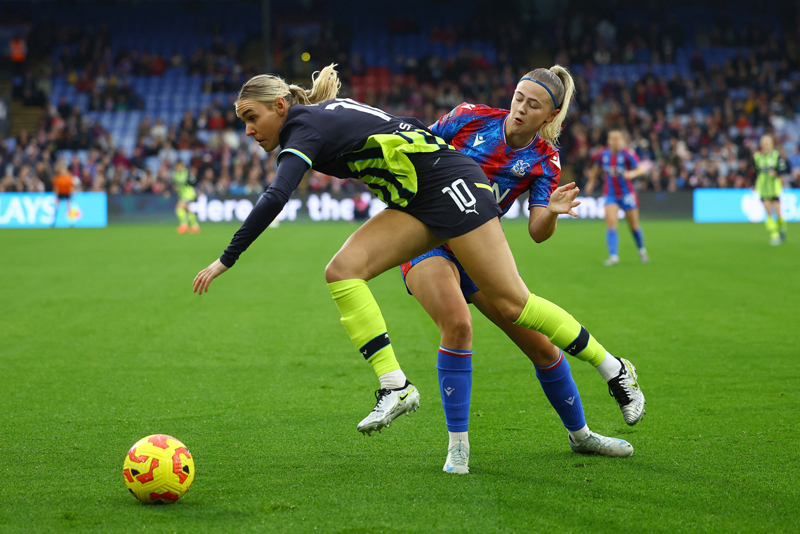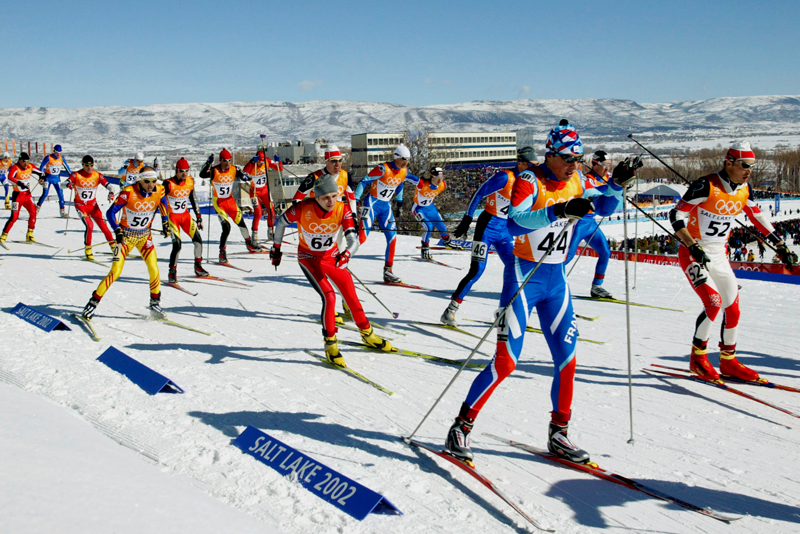Exercise-induced injuries frequently prevent optimal training and competitive success for an athlete, and can limit or discourage others from enjoying the health benefits of exercise. Enhancing recovery from sports injuries is therefore crucial for athletes and recreational trainers. Injured exercisers often use methods such as rest, ice, stretching etc in an attempt to enhance recovery from injury, but frequently overlook nutrition. In this article, we’ll focus on nutrition and acute/traumatic sports injuries, and the problems associated with limb immobility.
Phases of injury
Exercise-induced injuries generally have two main phases, both of which may be influenced by nutrition:Immobilisation/atrophy stage (first phase) – Depending on the type and severity of the injury, immobilisation can last from a few days to several months. During this time, metabolic changes in the tissues resulting from inactivity lead to loss of strength and function.The loss of muscle that leads to these functional problems is well recognised, but recently other tissues, such as tendon have been given more attention;
Rehabilitation and increased activity of the injured limb (second phase) – This phase follows the return of mobility leading to muscle hypertrophy and the return of functionality. Unfortunately, the complete recovery of strength and function following injury-induced immobilisation takes much longer than the time it takes to lose them.
Muscle loss
During immobility, the most obvious change is a loss of muscle mass leading to reduced muscle function. Inactivity results in rapid muscle loss and the primary metabolic factor leading to muscle loss is decreased muscle protein, particularly myofibrillar protein creation. Interestingly – perhaps surprisingly to many – protein breakdown also decreases, at least in humans. However, the decrease in muscle protein synthesis is greater than the decrease in muscle protein breakdown, thus the muscle is in overall negative protein balance.Muscle protein balance is the metabolic mechanism responsible for changes in muscle mass. Negative overall muscle protein balance over any given time means that muscle protein is being lost. Thus, nutritional interventions should focus on alleviating, as much as possible, the decrease in muscle protein synthesis so that any period of negative muscle protein balance is minimised.
Increased protein intake is often the first nutritional countermeasure considered for muscle loss. It is well known that protein or essential amino acid intake increases muscle protein synthesis, both at rest and following exercise, resulting in positive muscle protein balance. However, protein intake may not have the same impact during inactivity.
Previously, studies in elderly human subjects demonstrated that the muscle was resistant to the anabolic stimulus of amino acids. An investigation by researchers from McMaster University in Canada recently demonstrated that immobility decreases the ability of myofibrillar proteins to respond to amino acids (1). So, not only does immobilisation decrease basal levels of muscle protein synthesis, but the muscle also fails to respond properly to protein intake. Therefore, increased protein intake during inactivity may not have the impact on maintenance of muscle mass that could be expected from studies on active, healthy muscle.
Whereas increased protein intake seems to have little impact on loss of muscle mass and strength in inactive muscle (known as anabolic resistance), there is an intervention that could, at least potentially, decrease this resistance. Leucine (an amino acid building block of protein) is well known to increase protein synthesis in cell culture and rat studies, and despite rather vague support for the effectiveness of leucine during muscle anabolism, may also help overcome the anabolic resistance of muscle protein synthesis.Studies in elderly humans indicate that the anabolic resistance may be overcome by increasing the leucine content of ingested amino acids (2). Furthermore, the rat studies used to study the effect of leucine on muscle protein synthesis used a catabolic model, meaning muscle protein synthesis is decreased. In fact, leucine ingestion typically increases muscle protein synthesis back to normal levels. Together, these studies show that the anabolic signalling pathways in muscle are inhibited in these ‘catabolic situations’, thus reducing protein creation.
To date, no study has specifically examined the impact of ingesting extra leucine along with protein on muscle protein synthesis and muscle loss in immobilised human muscle. However, it is intriguing to consider and may be worth a try. Of course, the amount of leucine in relation to the protein and other details of such an intervention would need to be determined by experimentation.
Energy expenditure
Another important consideration during injury-induced immobilisation is the total energy intake (ie calories consumed). By necessity, the total energy expenditure is likely to decrease during immobility. Depending on which limb is immobilised, a substantial decrease in total energy expenditure is likely because exercise is more difficult or less convenient. Furthermore, a more subtle reduction in energy expenditure may stem from reduced protein turnover. Muscle protein synthesis and breakdown are both energy-requiring processes; if these are processes are suppressed as a result of injury, energy requirements may be further reduced. This fact contributes to the necessity for many injured athletes to dramatically reduce energy intake to avoid weight gain.However, there are factors to consider here. Firstly, it is clear that during the healing process, energy expenditure is increased by as much as 20%, particularly early on and if the injury is severe. So, whereas the total energy intake may still need to be reduced, the reduction in calorie intake may not need to be severe.
Another factor related to calorie intake is the energy cost of moving around. If an injury results in the need for crutches to get about, the energy cost can be dramatically increased. This increase results from the fact that, per unit of distance covered, walking with crutches increases energy expenditures two to three times over that of regular walking. Depending on how much ‘crutching’ is done, the energy intake may not need to go down by much at all.
Energy intake during immobilisation also may have an impact on muscle protein synthesis. Care is needed to ensure the decrease in energy intake is not so great that optimal muscle protein synthesis is impaired, because decreased protein synthesis is the major contributor to muscle loss. Obviously, the proper balance should be sought, but I suggest that a small amount of weight gain may be preferable to a lack of calorie intake to support proper muscle healing and prevent muscle protein loss.
Although muscle loss is the obvious concern during inactivity, tendons and ligaments are also affected by immobilisation. Tendons are composed primarily of the connective tissue protein, collagen. Immobilisation results in changes in the way that tendons move, which are associated with decreased tendon collagen synthesis (3).
There is very little known about nutritional influences on tendon metabolism in any situation; for example, we know that tendon and muscle collagen synthesis rates do not respond to increased amino acid intakes (from protein) (4), suggesting that protein feeding would have little impact on tendons.
Bone collagen synthesis (an important aspect of bone healing), on the other hand, does respond to increased amino acid levels (4). So although this intervention has not been studied in humans, there is reason to believe (theoretically at least) that protein feeding may enhance bone formation. We also know that sufficient intakes of calcium and vitamin D during healing from fractures are important for optimal bone formation.
Rehabilitation and hypertrophy
The functional situation and metabolic requirements during the rehabilitation stage may be very different from that during enforced inactivity of the limb (see figure 2). It’s likely that the overall energy expenditure will increase to a greater or lesser degree. Muscles that have atrophied will begin to hypertrophy with increased activity. Moreover, muscle protein synthesis requires a lot of energy, which will further increase energy requirements. And although perhaps a bit counterintuitive, there is ample evidence that muscle protein breakdown is increased during rehabilitation-induced muscle growth, probably to improve muscle remodelling.These increases in muscle turnover will contribute to increased energy requirements during recovery, so energy intake needs to increase to some extent – perhaps significantly, depending on the injury and associated immobilisation. One certainty is that given the context of protein metabolism necessary for muscle hypertrophy, energy intake should not be restricted.
Increased protein turnover may be supported by increased protein intake and it is clear that increased amino acid availability following exercise stimulates muscle protein synthesis resulting in positive net muscle protein balance (leading to muscle growth). Despite some ambiguous results, a recent study suggested that increased protein intake enhances recovery from immobilisation (5). However, how much protein to include in the diet is still a big question mark and future studies are needed to shed more light on this question.
In healthy, young males, muscle hypertrophy occurs with much less dietary protein than many believe necessary (eg 1.2g/per kilo of bodyweight per day). Certainly, as long as it fits within any total calorie intake limits and does not restrict the amount of carbohydrate or essential fat intake, elevating protein intake may not be a problem.
However, the notion that increasing protein intake results in a proportional increase in muscle size and function is not supportable. Other factors may be more important. For example, the timing of protein intake in relation to exercise, the type of protein ingested, other nutrients ingested at the same time, and interactions between these factors all influence the utilisation of the amino acids from ingested protein(6). Thus, the total amount of protein may not be the most important nutritional factor influencing muscle hypertrophy.
References
1. J Physiol 27-10-2008;
2. Am J Physiol Endocrinol Metab 2006; 291:E381-E387
3. J Musculoskelet Neuronal Interact 2005; 5:41-52
4. Exp Physiol 2005; 90:427-436
5. J Orthop Res 2006; 24:2114-2123
6. Eur J Sports Sci 2008; 8:107-118










